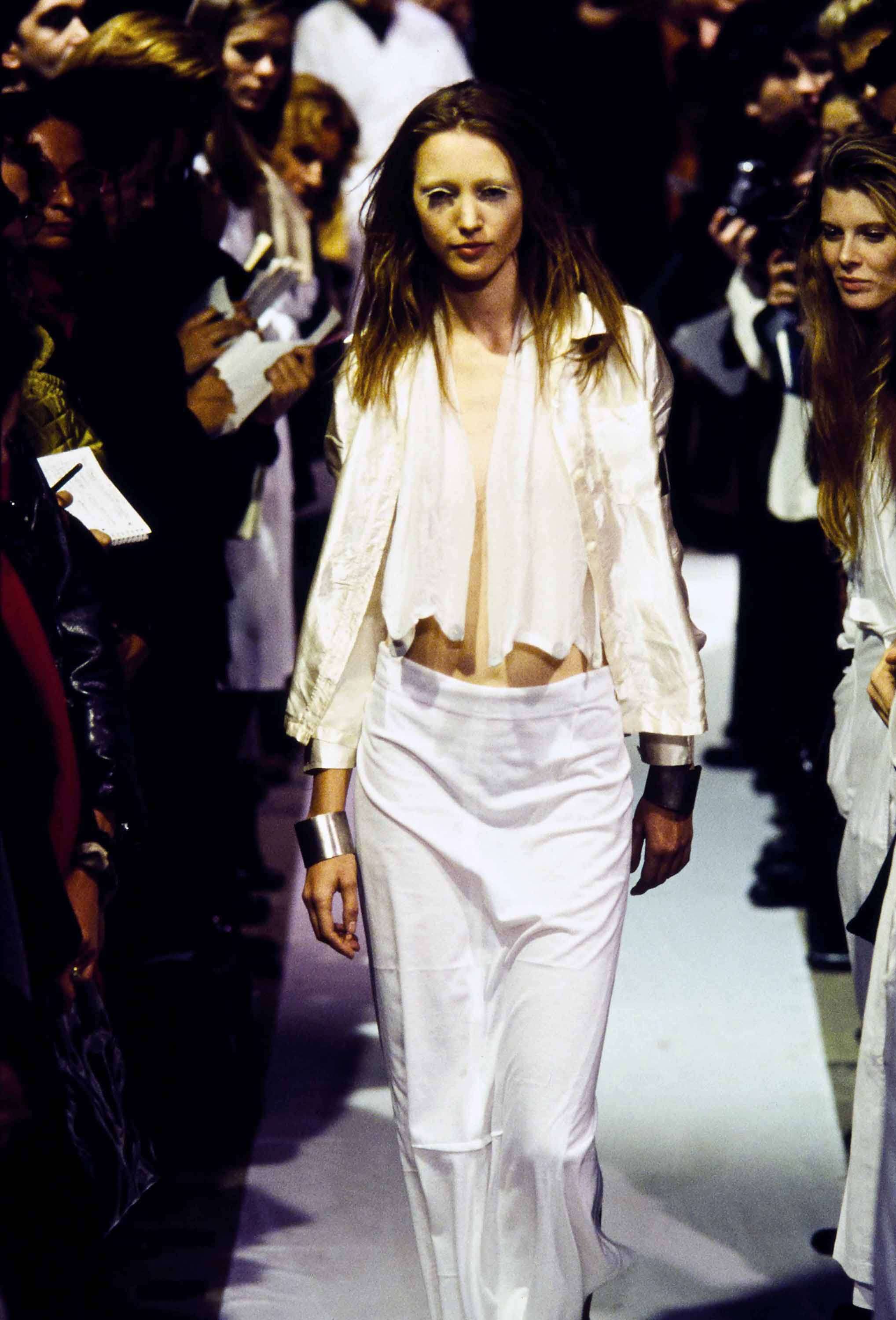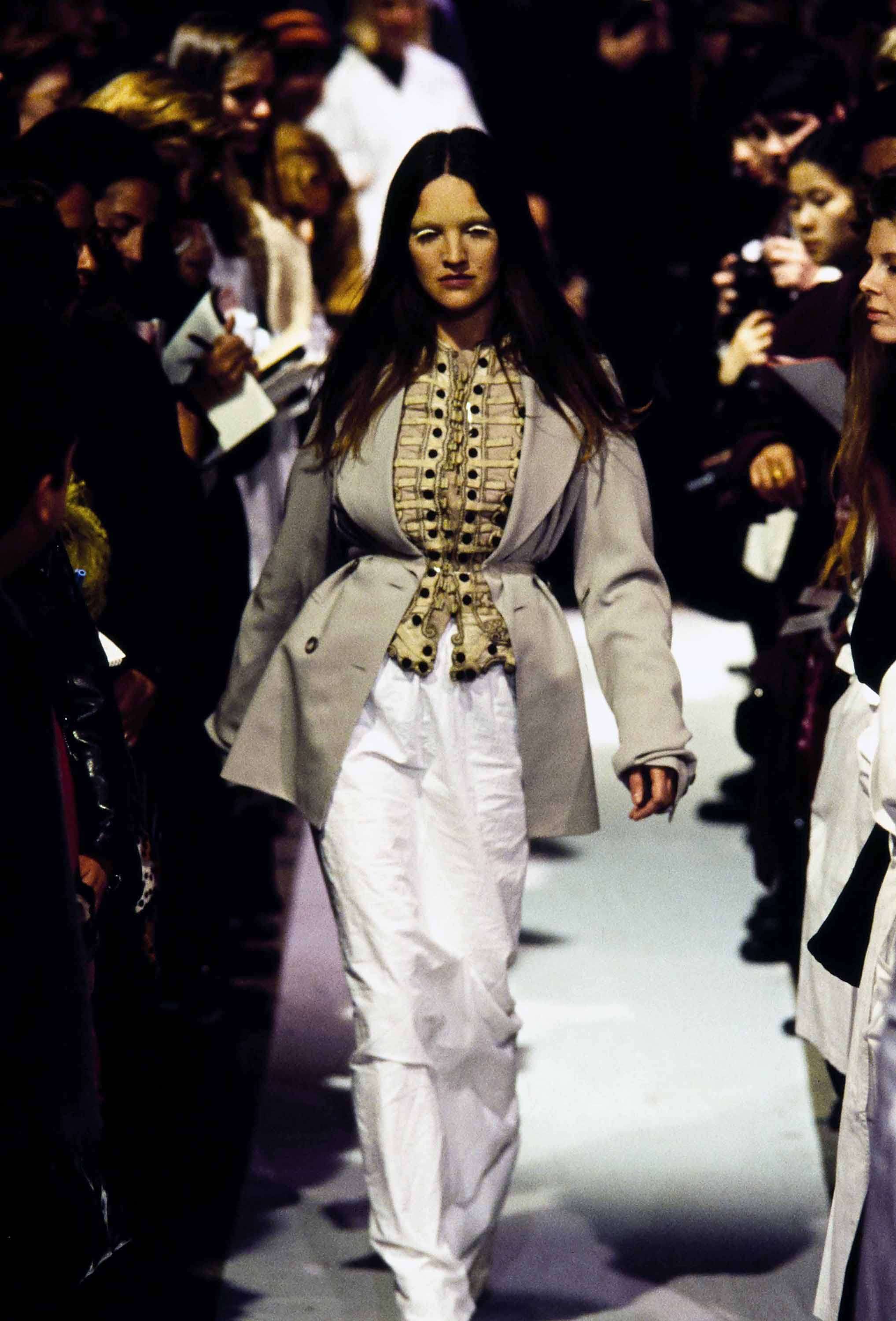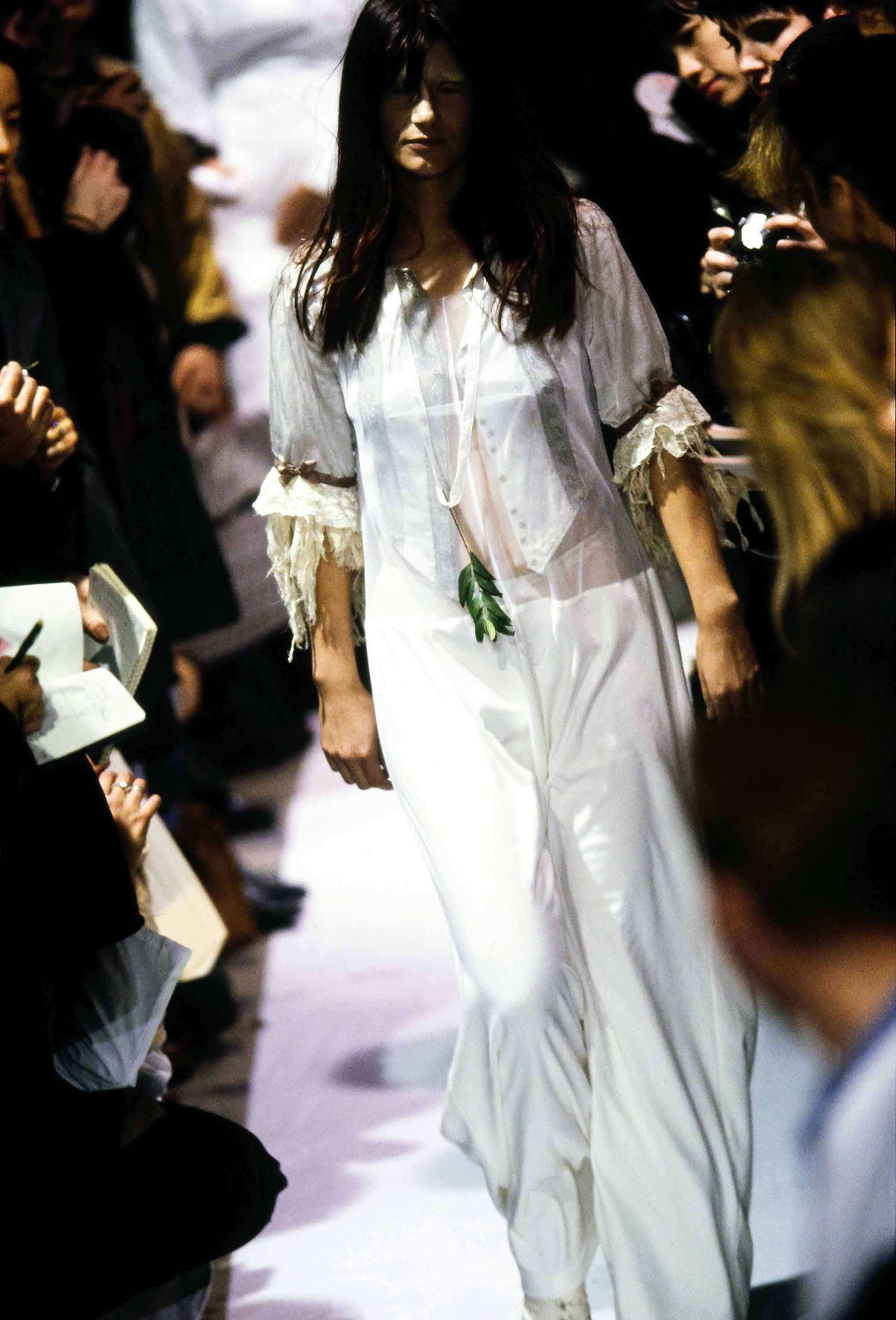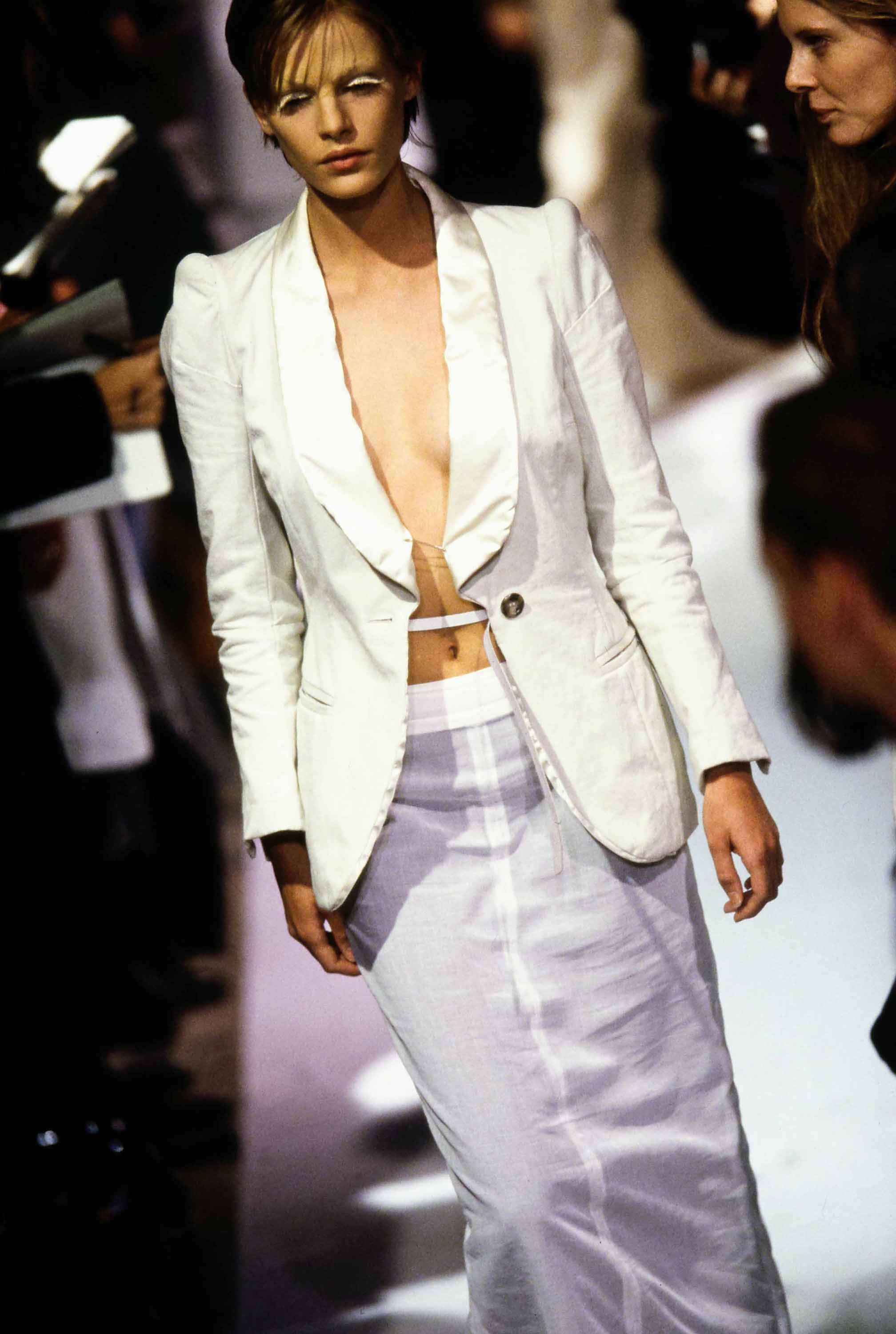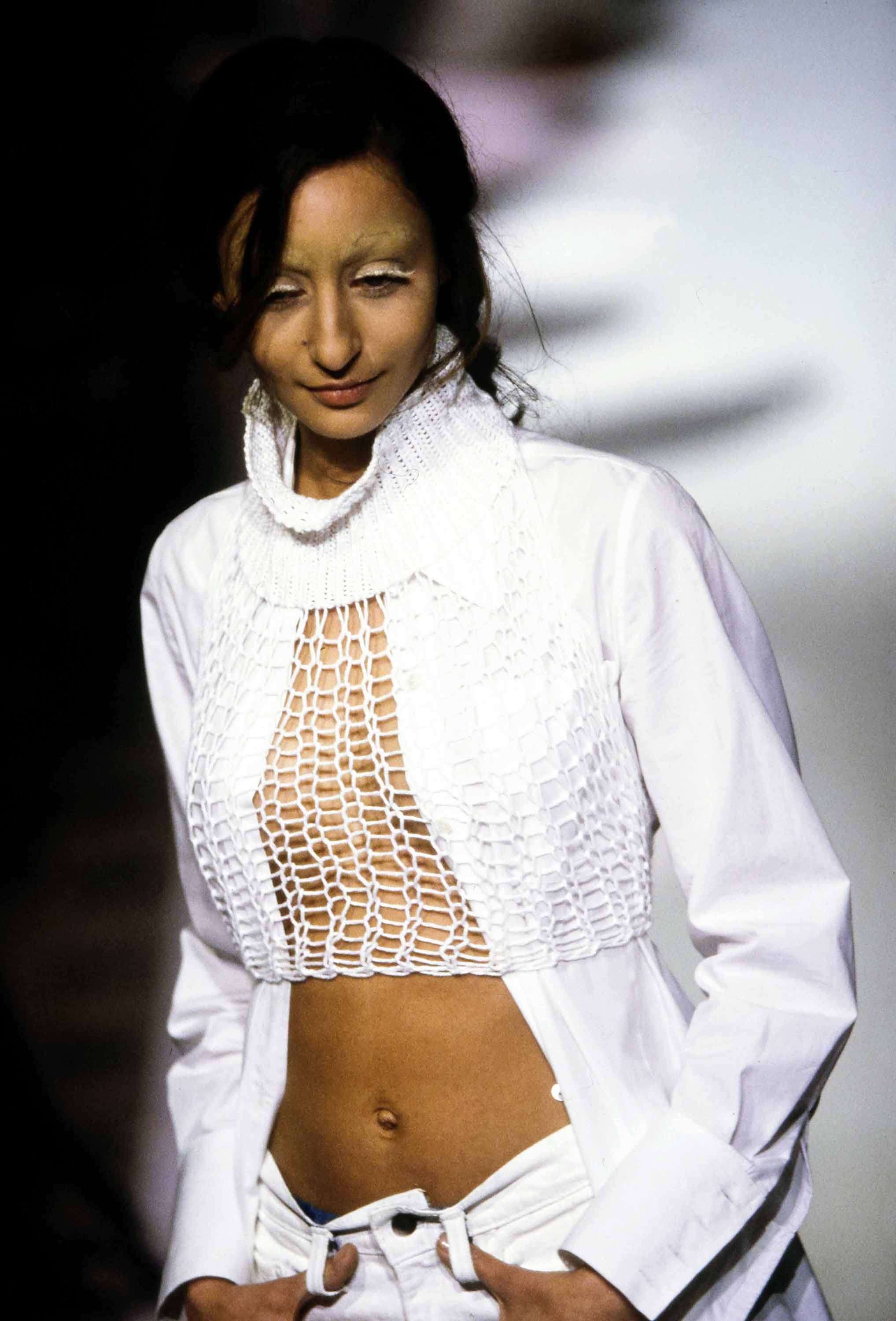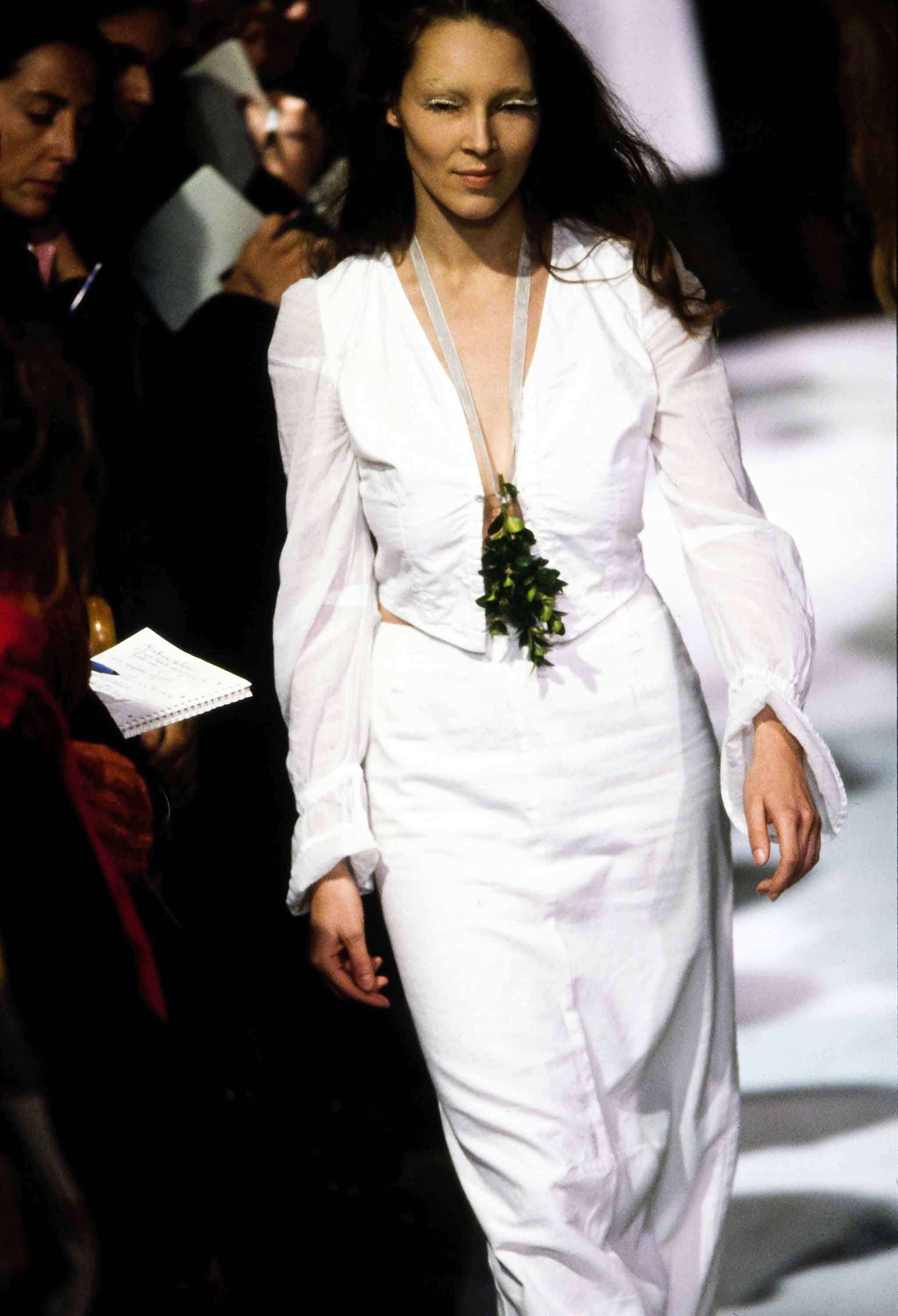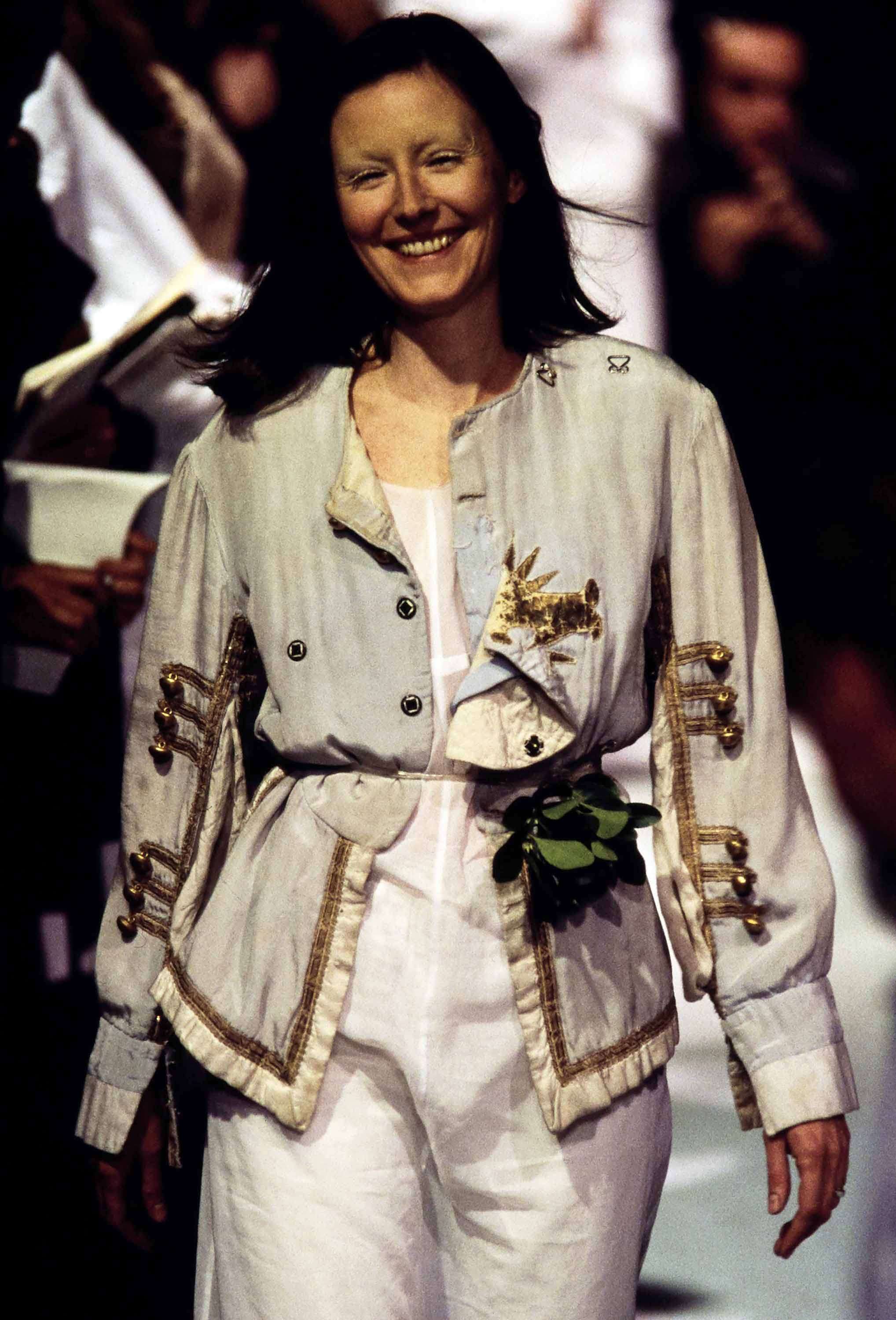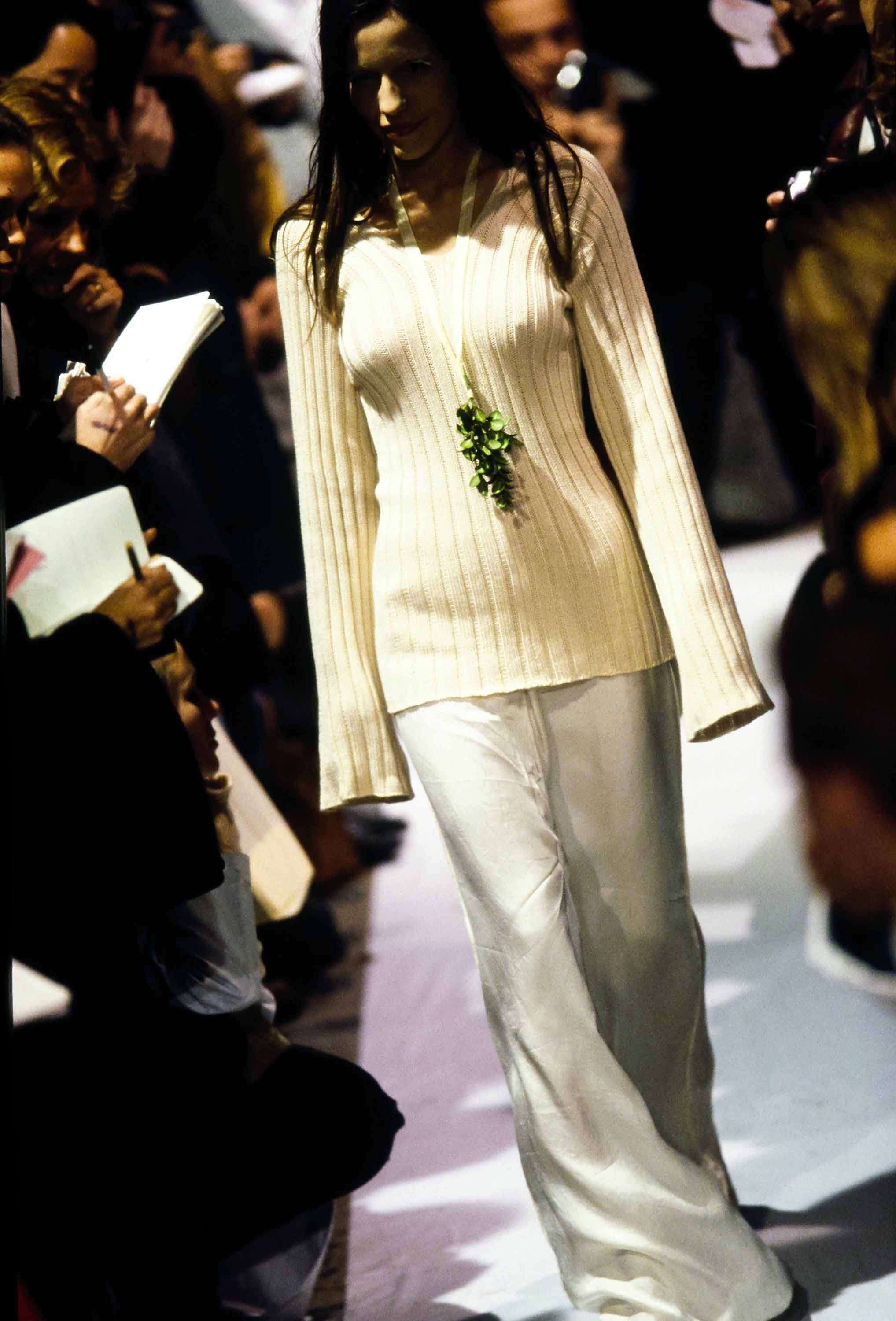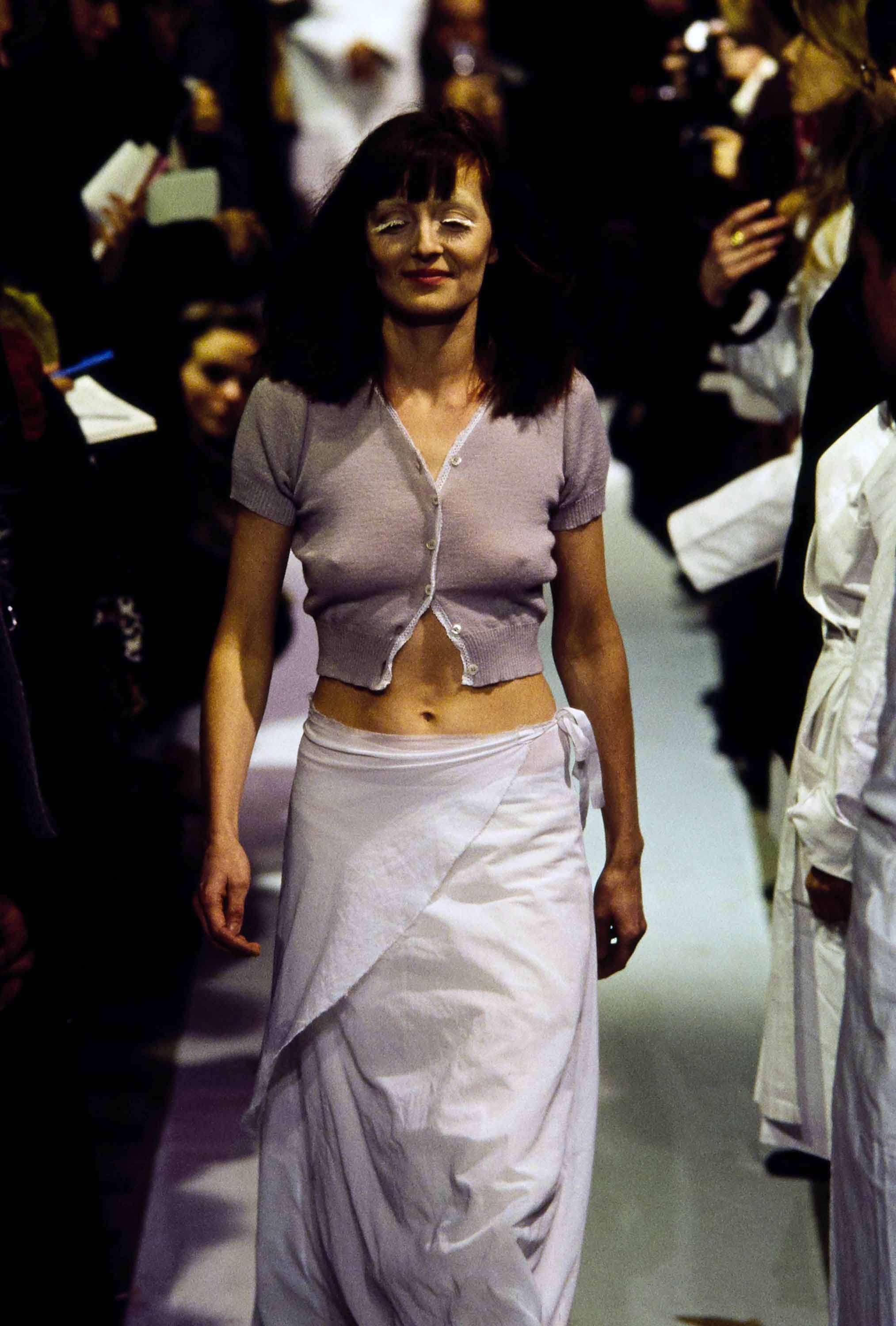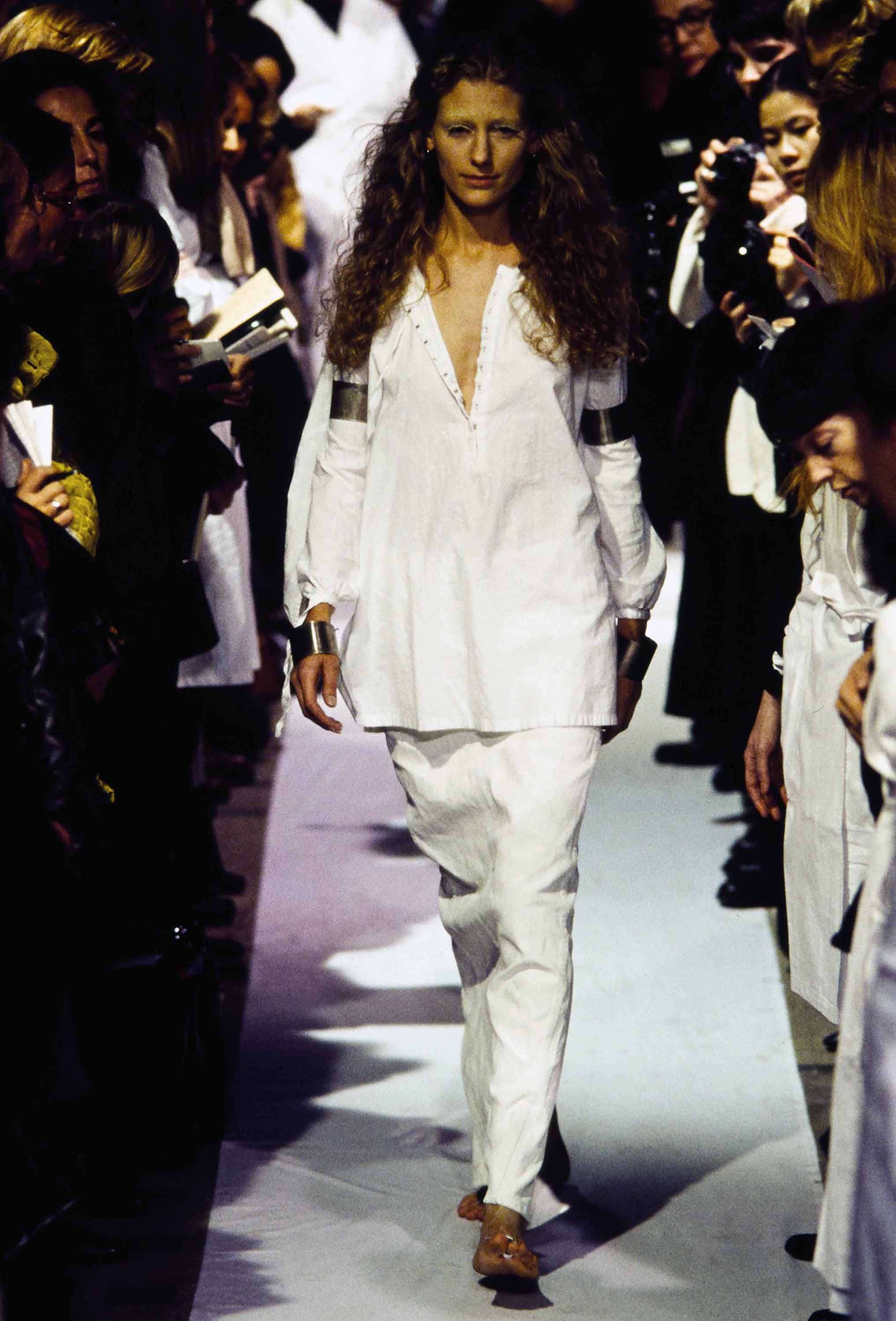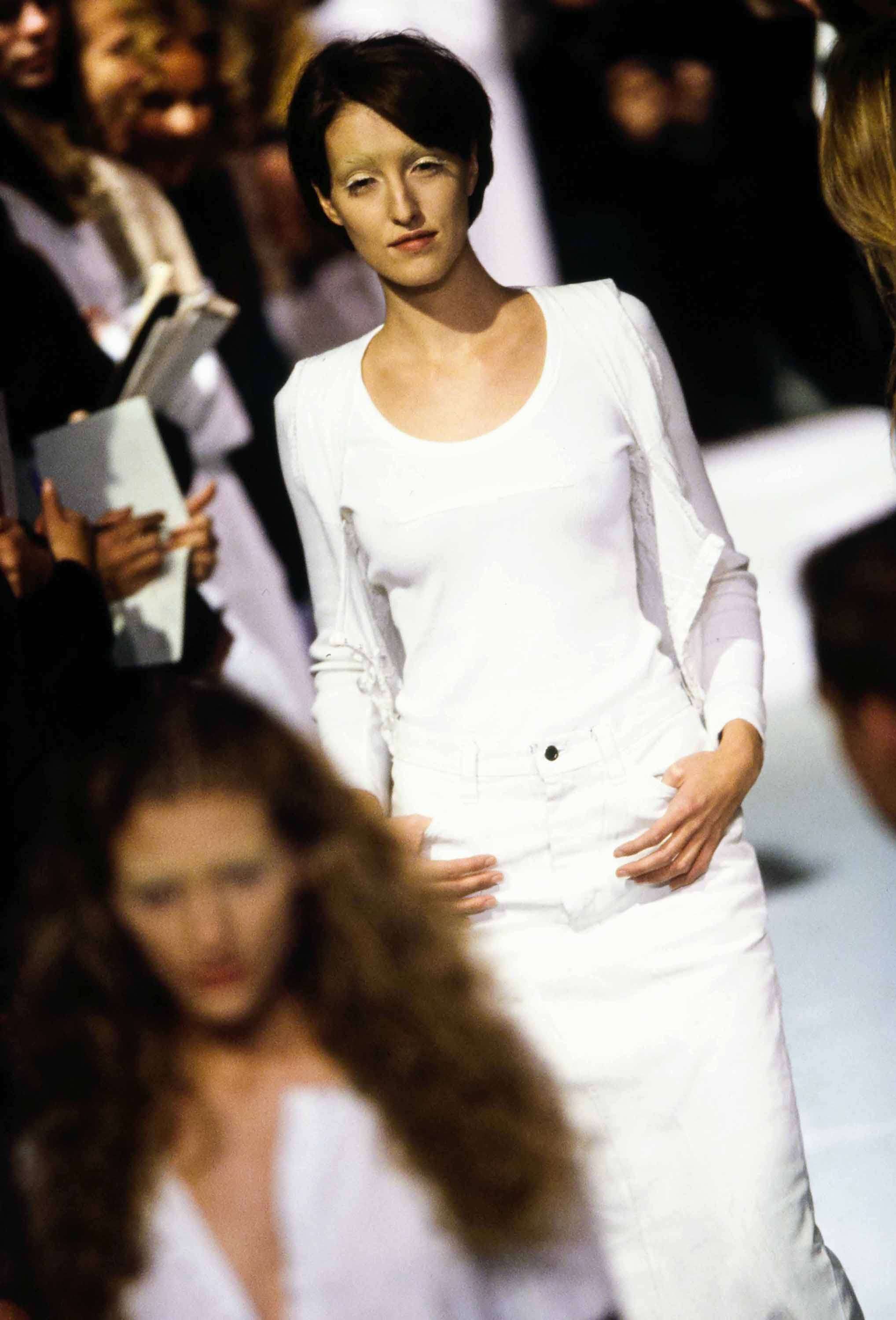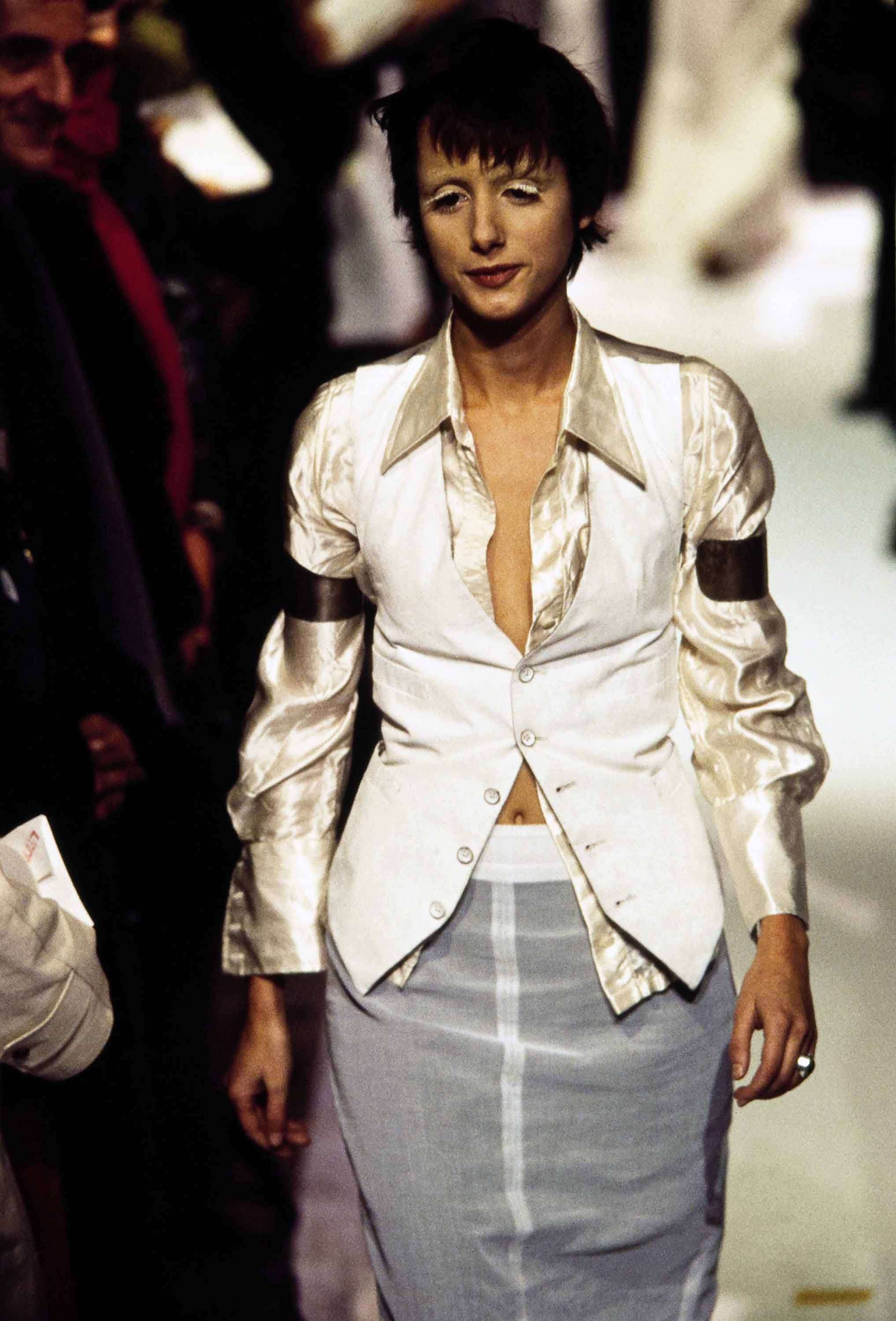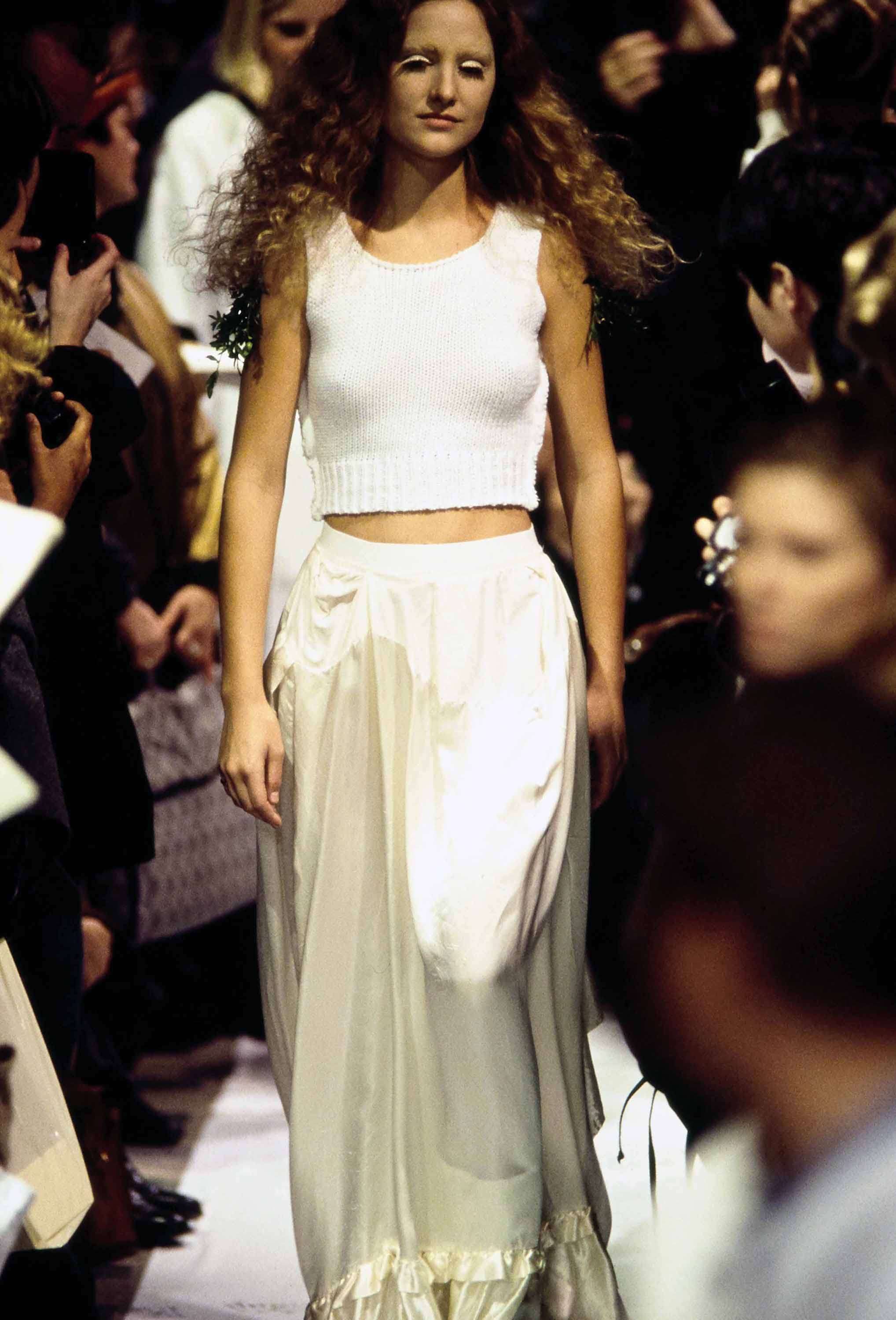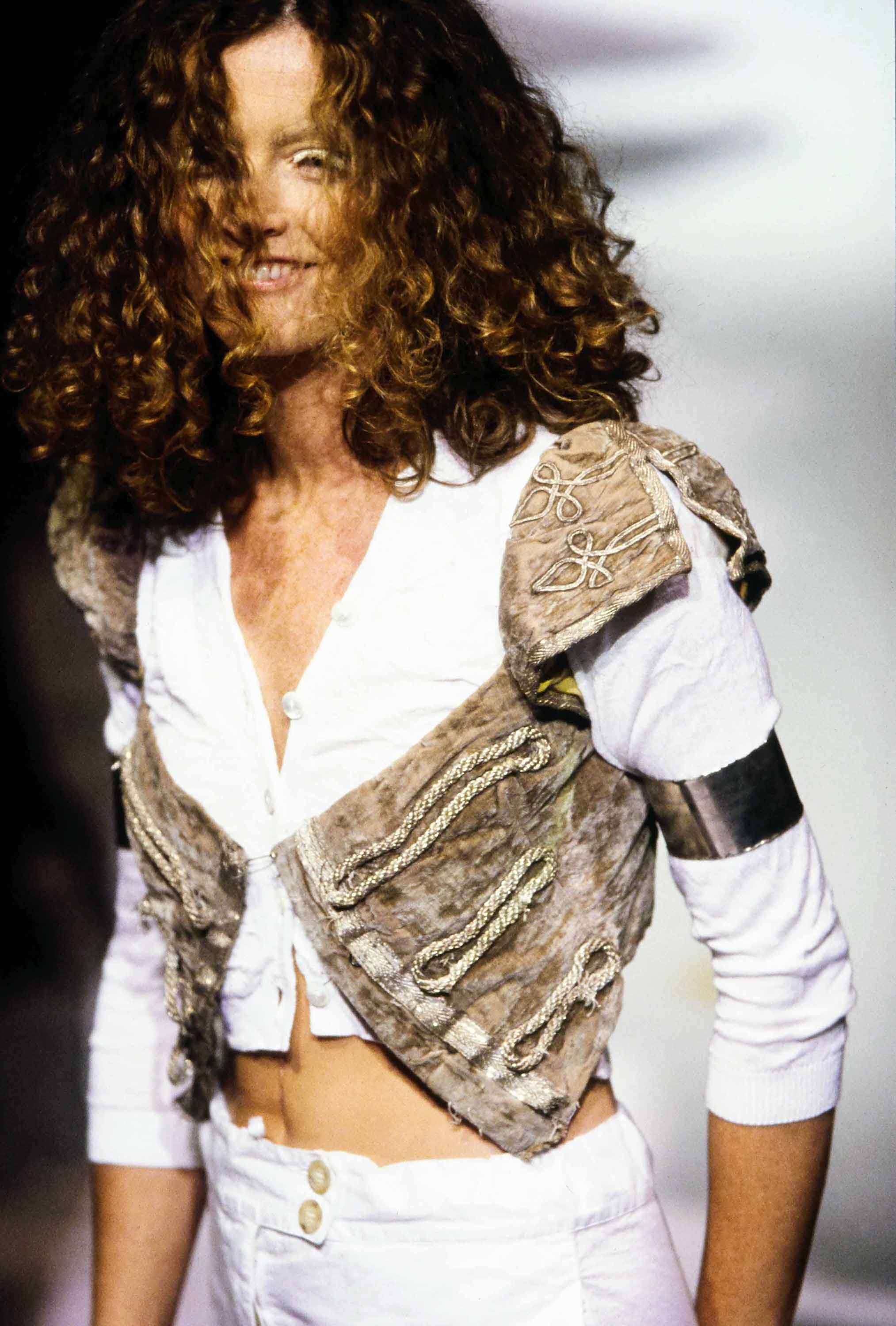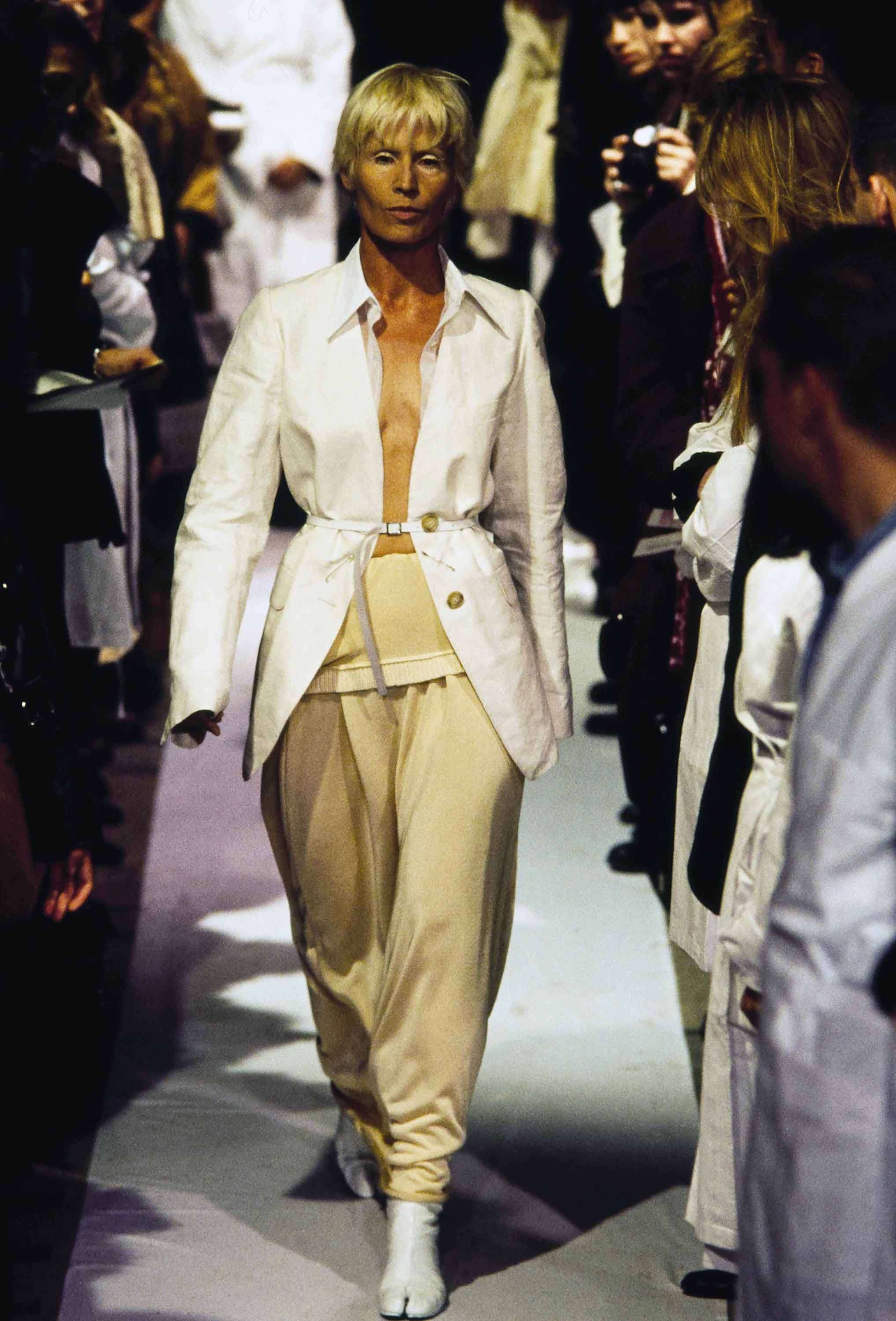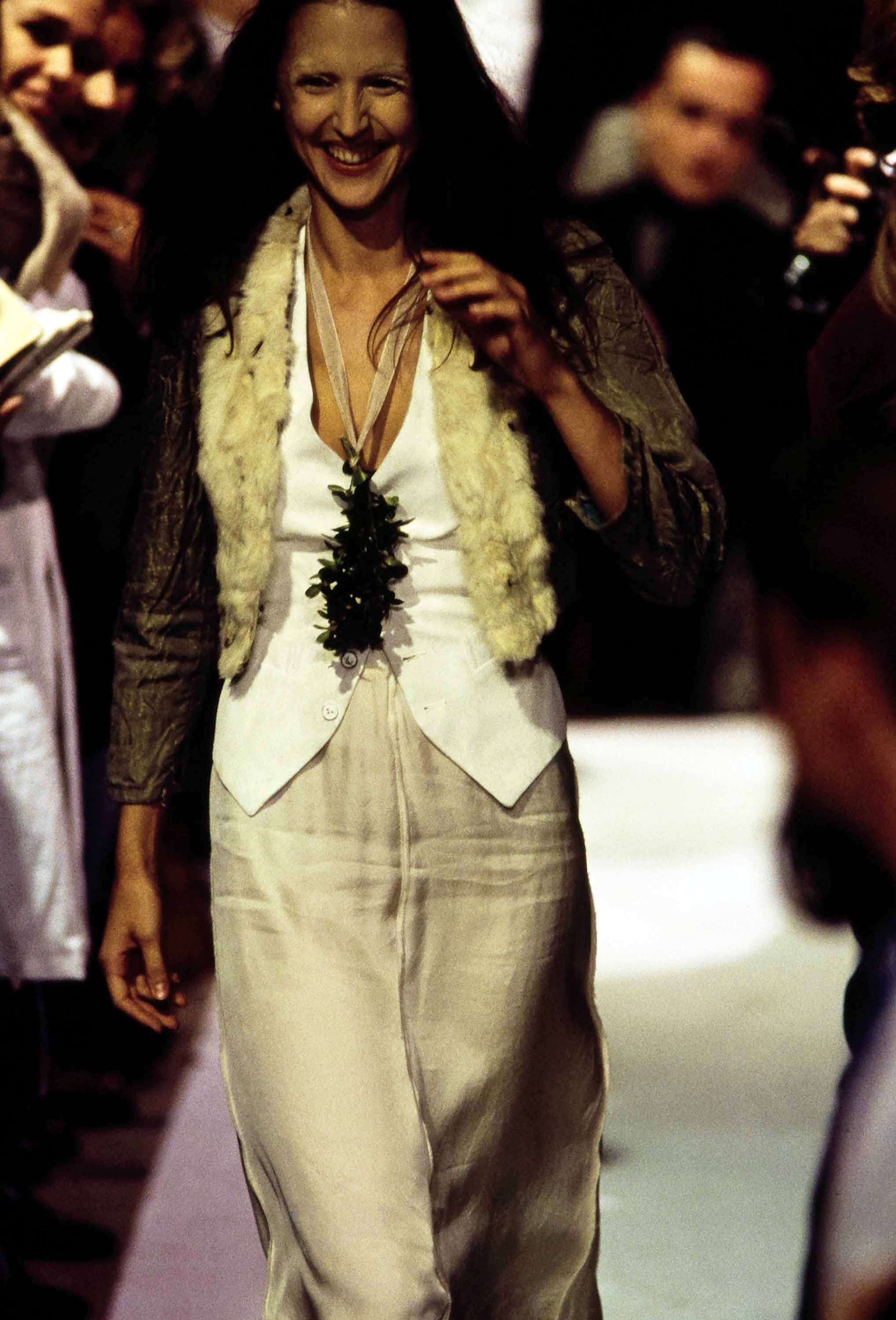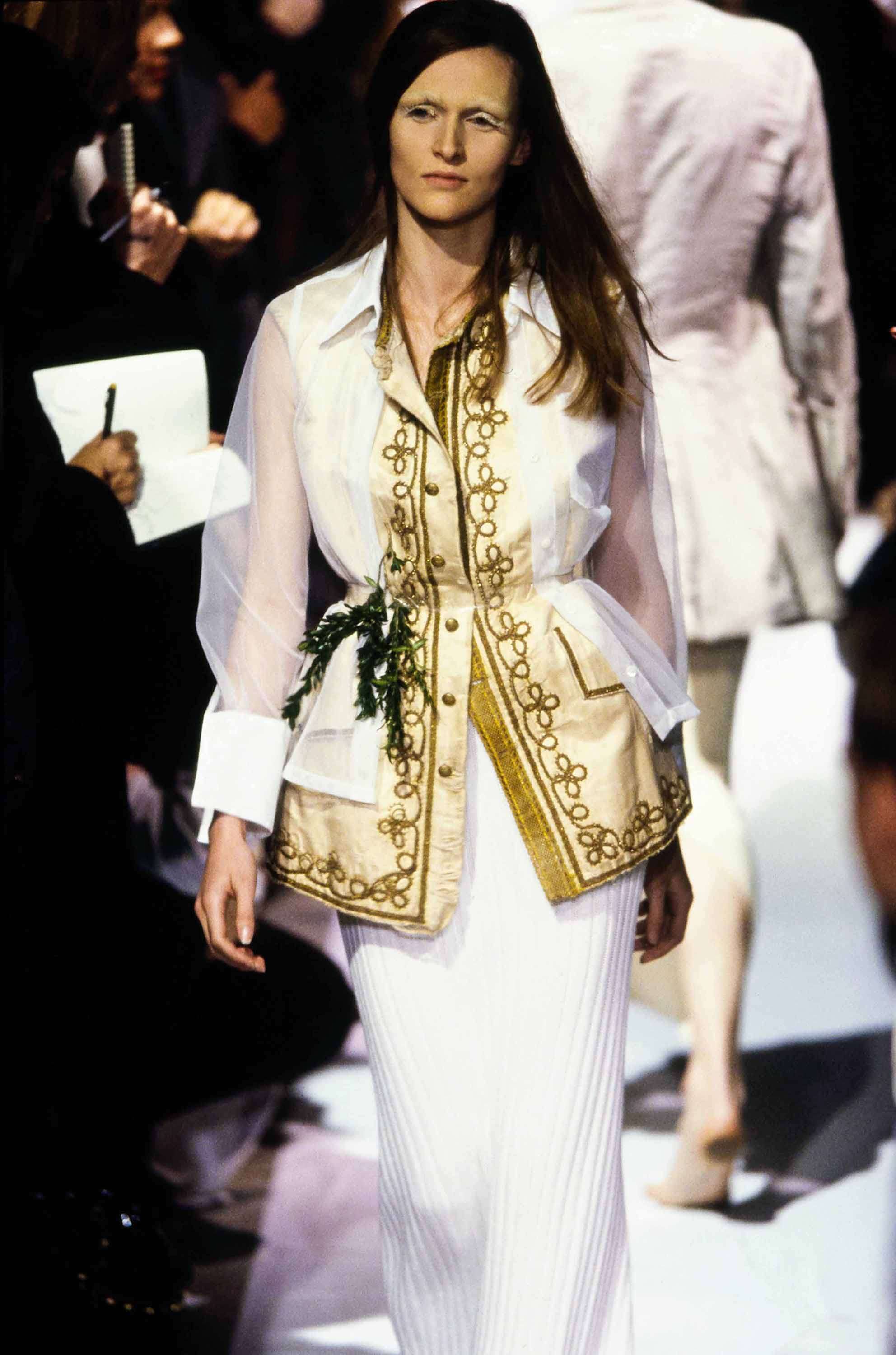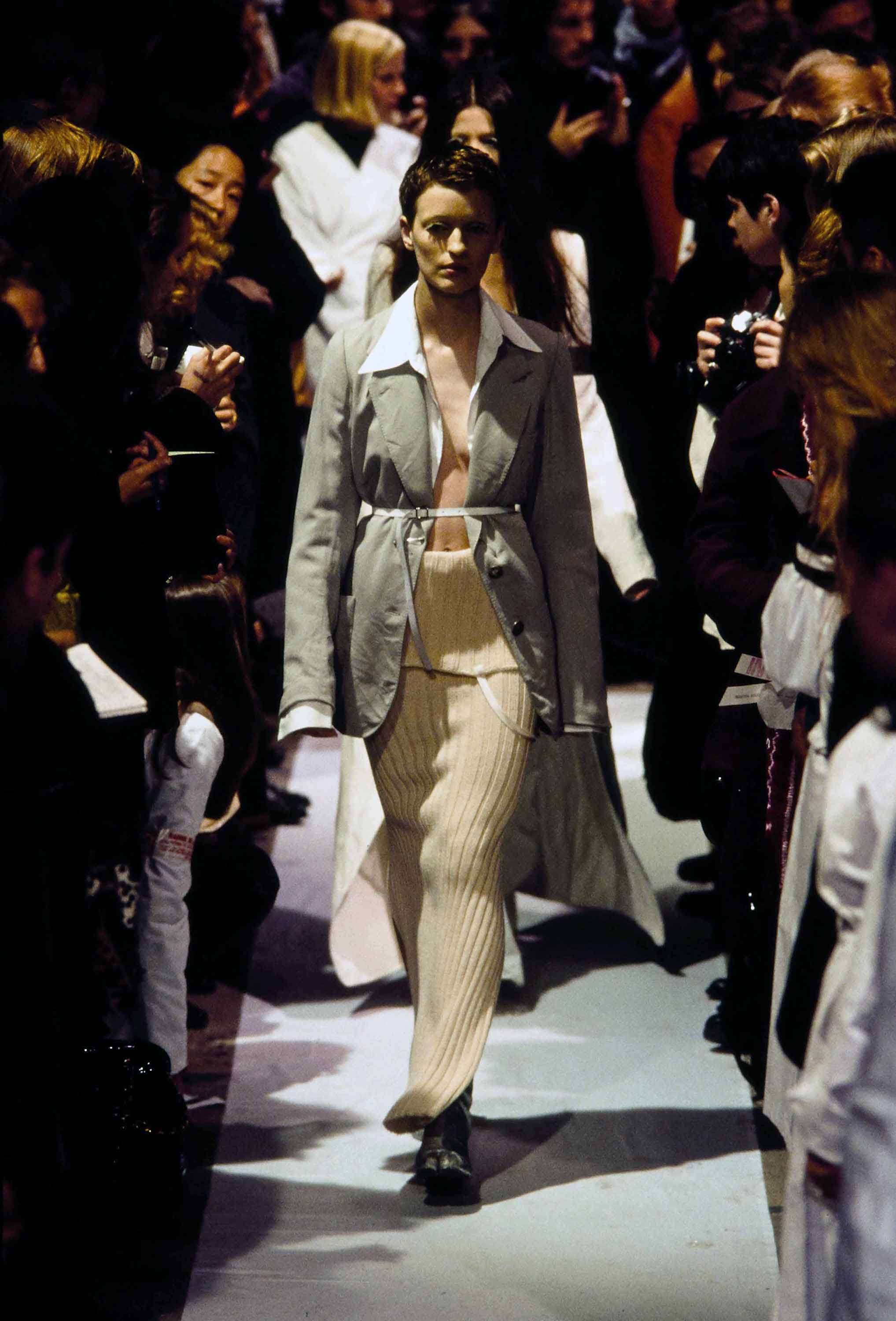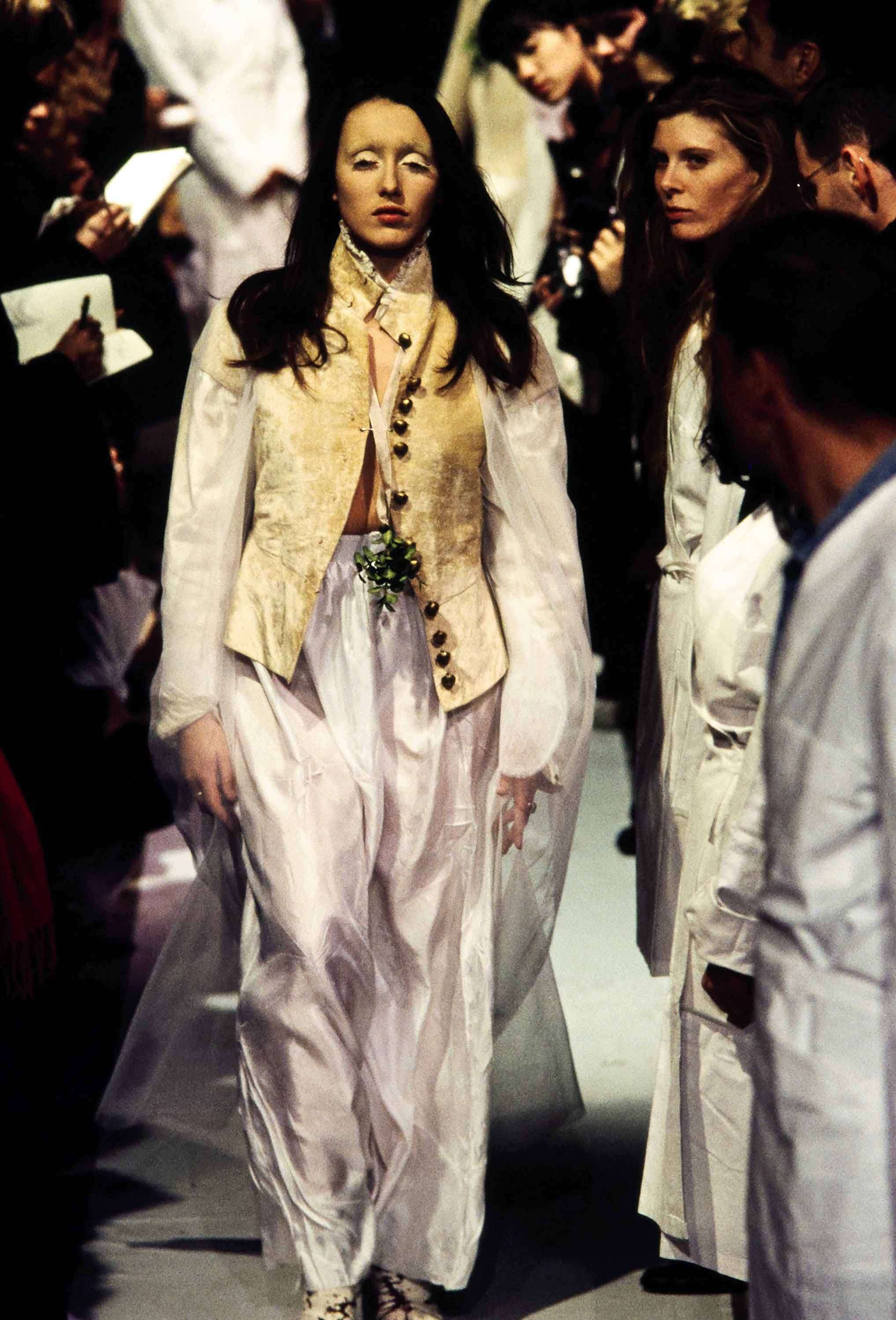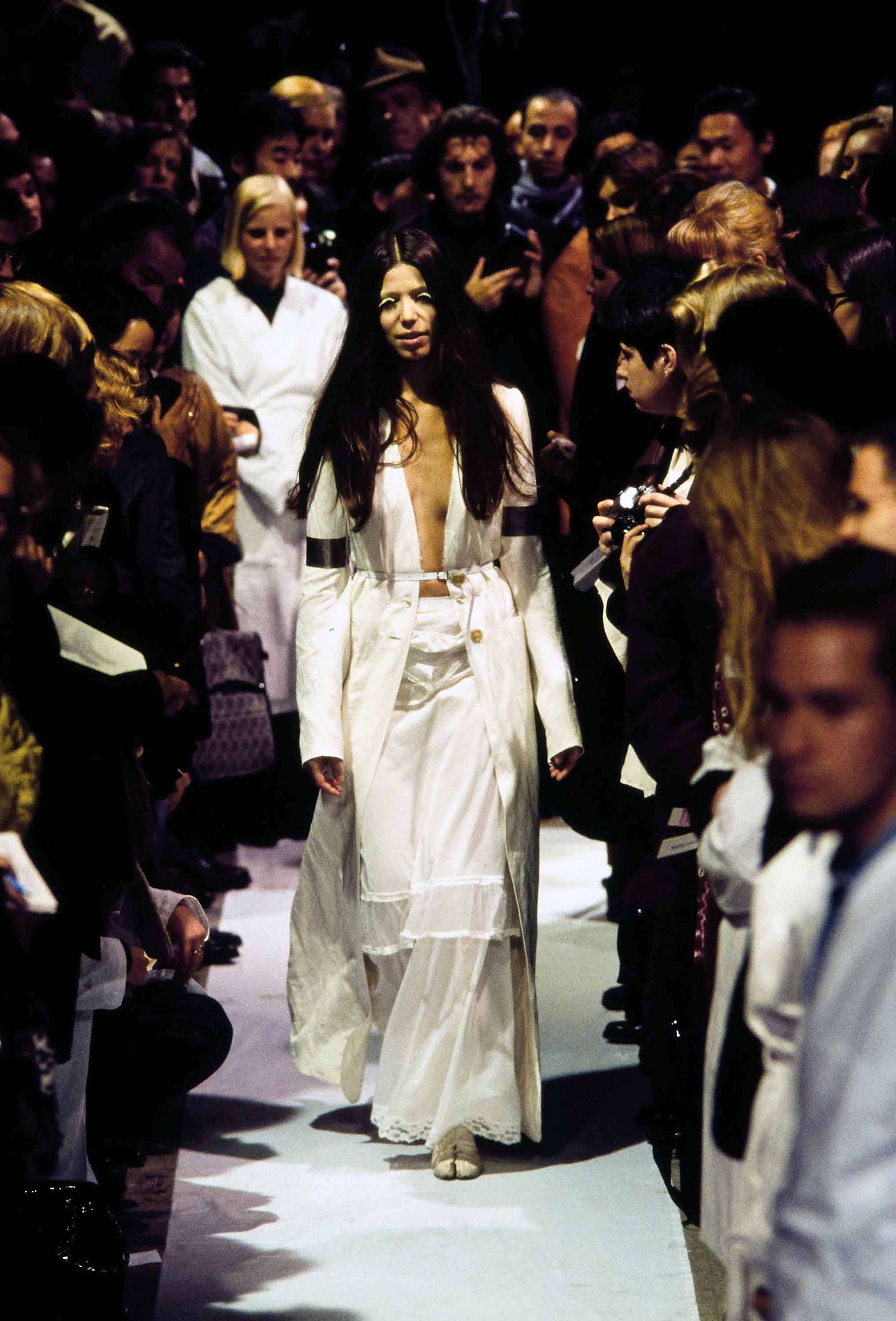SPRING/SUMMER 1993
Season Coverage
Two cohesive shows by one designer unbeknownst to the press held on the opposite ends of Paris, both at 8:30 pm. Some editors received a white invitation, “The White Show” and others received a black invitation, “The Black Show”. This was a classic Margiela move, rebelling against the industry standards this time bewildering conservative editors whomst attended fashion week shows one after the next with a note-pad in their hands and harsh critique present in their eyes, a superiority complex with the knowledge they could make or break someone's career with their scathing reviews.
Journalists were invited to the white show, and photographers to the black. The editors wrote of the white show and were perplexed when they discovered photos of the black show that contradicted the other. This season utilized upcycled and revived deadstock theatre costumes, which was no new project to the maison as they habitually repurposed clothing from flea markets as a way to present new ideas and maintain their shows on a low budget. Martin also had a passion for the “memory” of clothing and its ability to be manipulated in different ways to repurpose it and give it a hint of modernity. This is significant in this show because, of course, this clothing had an entire life-span before the maison got their hands on it. There was a juxtaposition between the extremely meticulous techniques the design team had used to construct the garments in a beautifully tailored way opposed to the obscure styling elements utilized that makes fashion more accessible, such as taping rose petals to the arms of the models. One of the most prevalent accessories was the boxwood tree foliage that was either secured to the arm held by clear tape or worn around the neck held by ribbon. The utilization of plants as accessories seems to pay homage to the corsage traditionally worn on a lapel for special occasions but translating it in a new and refreshing way.
The models, or shall we say muses (as many were street-casted per usual of Margiela) were seemingly relaxed in the clothing and some with beams painted on their faces, just as the clothing intended, leaving an impression of authenticity. The clothing itself was a mix of romanticism and boheme; Many models were bare footed with just a toe ring apparent. Layered styling elements, crushed velvet, brocade jackets, manipulation of garments exposed utilizing silver cuffs and safety pins, a ribbed dress folded to appear as a skirt with a garter belt attached, sleeve lengths masking hands, sheer garments exposing clothing underneath appearing as a nostalgic memory held in the distance, and blazers cinched at the waist by belt were all details that persisted the length of this show. Although the theme for this Margiela show was much different than the one before it, there are always similar design elements that have become signatures of the house to this day.
Journalists were invited to the white show, and photographers to the black. The editors wrote of the white show and were perplexed when they discovered photos of the black show that contradicted the other. This season utilized upcycled and revived deadstock theatre costumes, which was no new project to the maison as they habitually repurposed clothing from flea markets as a way to present new ideas and maintain their shows on a low budget. Martin also had a passion for the “memory” of clothing and its ability to be manipulated in different ways to repurpose it and give it a hint of modernity. This is significant in this show because, of course, this clothing had an entire life-span before the maison got their hands on it. There was a juxtaposition between the extremely meticulous techniques the design team had used to construct the garments in a beautifully tailored way opposed to the obscure styling elements utilized that makes fashion more accessible, such as taping rose petals to the arms of the models. One of the most prevalent accessories was the boxwood tree foliage that was either secured to the arm held by clear tape or worn around the neck held by ribbon. The utilization of plants as accessories seems to pay homage to the corsage traditionally worn on a lapel for special occasions but translating it in a new and refreshing way.
The models, or shall we say muses (as many were street-casted per usual of Margiela) were seemingly relaxed in the clothing and some with beams painted on their faces, just as the clothing intended, leaving an impression of authenticity. The clothing itself was a mix of romanticism and boheme; Many models were bare footed with just a toe ring apparent. Layered styling elements, crushed velvet, brocade jackets, manipulation of garments exposed utilizing silver cuffs and safety pins, a ribbed dress folded to appear as a skirt with a garter belt attached, sleeve lengths masking hands, sheer garments exposing clothing underneath appearing as a nostalgic memory held in the distance, and blazers cinched at the waist by belt were all details that persisted the length of this show. Although the theme for this Margiela show was much different than the one before it, there are always similar design elements that have become signatures of the house to this day.
Written by @isabellaterzuoli
Photos
